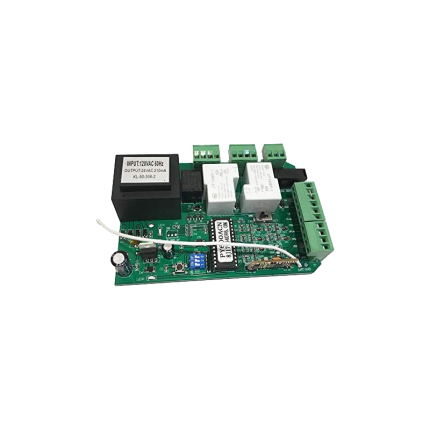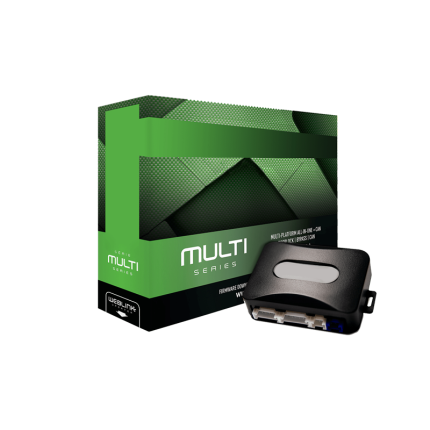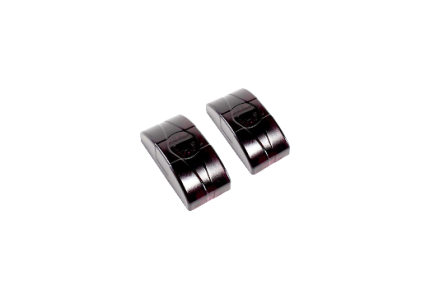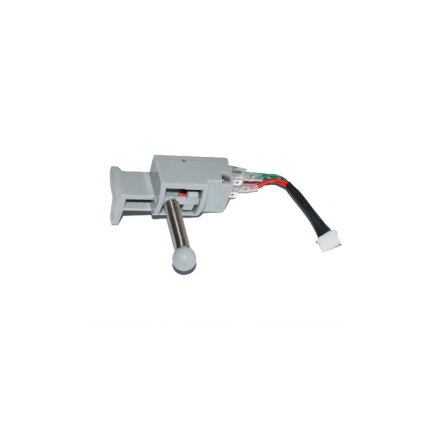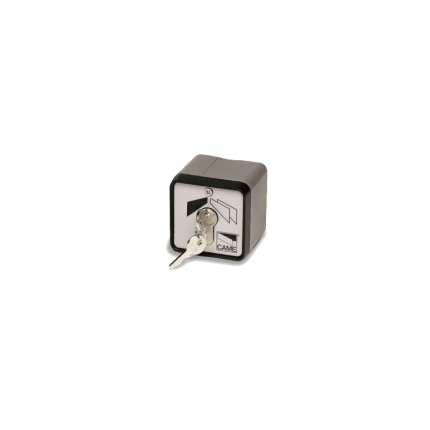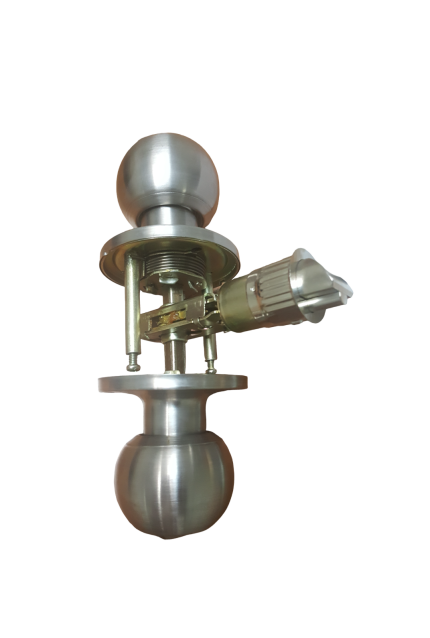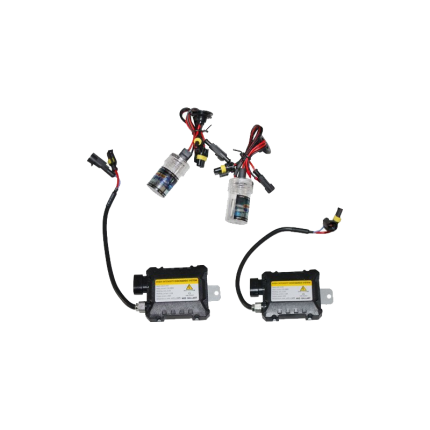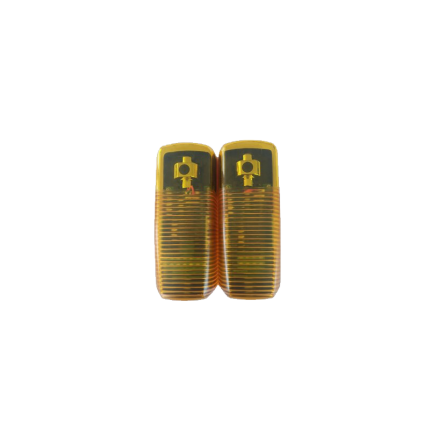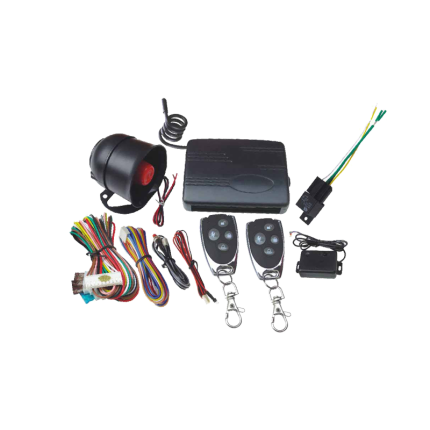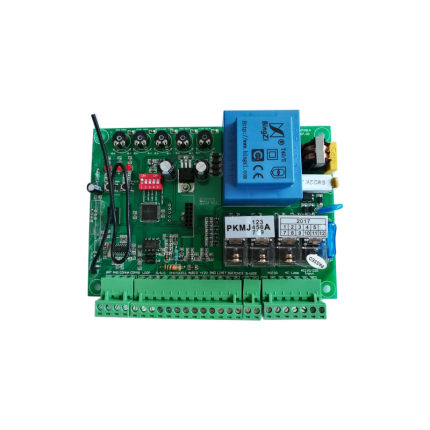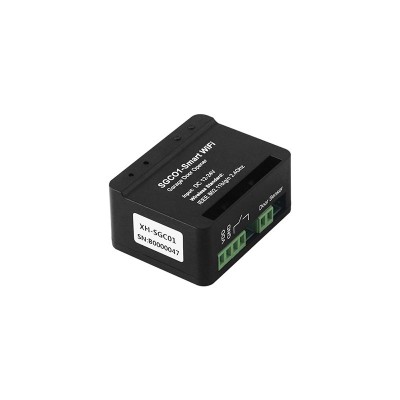Shop
Sliding gate operator control board SLRG110
Ship or pick up from our office.
Sliding gate operator control board SLRG110
The SLRG110 is a universal main control board for sliding gate operators that runs on 110-volt AC power.
It acts as the "brain" of a sliding gate system, managing its core functions.
Here's a breakdown of what the SLRG110 offers:
Core Functionality
- Motor Control: It receives signals from various access devices (like remote controls or keypads) and translates them into commands to control the gate's motor, initiating opening, closing, and stopping movements.
- Power Management: It receives power from a 110V AC source and directs it to the gate motor and other connected accessories.
- Adjustable Settings: The board typically allows for customization of gate operation, including:
- Adjustable speed settings for both opening and closing.
- Adjustable auto-close timer (e.g., 0, 30, 60, 90 seconds).
- Adjustable torque and closing force to suit different gate weights and preferences.
- Ability to add and delete remote controls easily.
- Option to set auto-close when power is restored after an outage.
Key Features & Safety
- Obstruction Detection: A crucial safety feature, the SLRG110 can detect obstructions in the gate's path during movement and automatically stop or reverse the gate to prevent damage or injury.
- This often utilizes infrared detection connectors for photocells.
- Remote Control Capability: It's designed to work seamlessly with remote controls for convenient operation.
- Emergency Release: The system usually includes an emergency release key for manual operation in case of power failure.
- Limit Switches: It connects to limit switches (often magnetic) that define the gate's fully open and closed positions, preventing overtravel.
- Accessory Inputs: The board has various input terminals for connecting additional accessories like:
- Photocells (safety beams)
- Manual push buttons
- Wired keypads
- GSM inputs (for remote access via mobile networks)
- Vehicle sensor exit wands
Universal Compatibility
The SLRG110 is considered a universal control board, meaning it's designed to be compatible with a wide range of sliding gate opener models.
This makes it a versatile replacement option for existing systems. It can operate gates weighing up to approximately 1750-1760 lbs.
Remote starter immobilizer bypass module
Ship or pick up from our office.
Remote starter immobilizer bypass module
A remote starter immobilizer bypass module is an essential component when installing an aftermarket remote car starter in most modern vehicles. Its sole purpose is to "trick" the vehicle's factory immobilizer system into believing that the correct key is present in the ignition, allowing the engine to start remotely. Here's a breakdown of what that means: What is a remote starter immobilizer bypass module system? Since around the late 1990s, and mandated for all new cars sold in Canada since the year 2000, virtually every vehicle is equipped with an electronic immobilizer system as an anti-theft measure. This system prevents the engine from starting unless it detects a specific, valid code.- How it works:
- Your car key (or smart key fob) contains a small electronic chip called a transponder. This chip stores a unique electronic code.
- When you insert the key into the ignition (or, with push-button start, have the fob within range), the vehicle's onboard computer (often via an antenna coil around the ignition barrel) reads the code from the transponder.
- If the code matches what's stored in the vehicle's ECU (Engine Control Unit), the remote starter immobilizer bypass module is deactivated, and the engine is allowed to start and run.
- If the code doesn't match, or if no valid code is detected (e.g., someone tries to hot-wire the car, or uses an unprogrammed key), the immobilizer will prevent the engine from starting, or it will start for a few seconds and then immediately shut off. It typically disables vital functions like the fuel pump or ignition system.
Safety sensor VDS-TEC2
Ship or pick up from our office.
Safety sensor VDS-TEC2
Technical Details:- NO/NC
- AC/DC 12-24 V
- Receiving Range: 15 Meters
- IP 44
- Compact
- Lightweight
- Portable
- Easy to use
Sliding gate operators limit sensor -Spring
Ship or pick up from our office.
Sliding gate operator limit sensor -Spring
A sliding gate operator limit sensor with a spring mechanism (also known as a mechanical limit switch or spring limit switch) is a common type of sensor used in automatic sliding gate systems to define the gate's fully open and fully closed positions. Here's how it works and what its characteristics are: Purpose of a Limit Sensor: For any automatic gate operator, the system needs to know exactly when the gate has reached its desired open and closed positions. This is crucial for:- Stopping the Motor: Preventing the motor from continuing to run once the gate has reached its limit, which would otherwise cause damage to the gate, the motor, or the track.
- Safety: Ensuring the gate stops precisely where it should, preventing it from hitting obstacles or over-extending.
- Proper Operation: Allowing for features like auto-closing, pedestrian mode, and proper synchronization if it's a dual-gate system.
- Components: A spring limit switch typically consists of:
- A microswitch (an electrical switch that requires very little force to operate).
- A spring-loaded lever, arm, or plunger connected to the microswitch.
- A mounting bracket to attach it to the gate operator or gate frame.
- Mounting: The spring limit switch is usually positioned on the gate operator itself, or on a bracket near the motor.
- Interaction with the Gate:
- On the sliding gate itself, usually along the gear rack or a specific part of the gate frame, two small "stop" tabs or flags are installed – one for the open limit and one for the close limit.
- As the gate moves towards its fully open or fully closed position, one of these tabs/flags will physically contact and push against the spring-loaded lever/plunger of the limit switch.
- This physical contact compresses the spring and activates the microswitch.
- Signal to Control Board: When the microswitch is activated, it sends an electrical signal to the gate operator's main control board.
- Motor Stop: Upon receiving this signal, the control board immediately cuts power to the motor, stopping the gate precisely at that determined limit.
- Physical Contact: The defining feature is that it relies on direct physical contact and force to activate the switch.
- Reliability: Generally reliable as they are a simple mechanical system.
- Durability: Made to withstand repeated physical contact. However, over time, the spring can wear out, lose tension, or the switch itself can be damaged by repeated impacts or debris.
- Adjustability: The position of the "stop" tabs on the gate can be adjusted to fine-tune the exact open and closed positions of the gate.
- Maintenance: May require periodic checks to ensure the spring is intact, the switch is clean, and the "stop" tabs are securely in place and correctly positioned. They can be susceptible to damage from impacts (e.g., if a child's toy or a pet gets in the way of the stop tab).
- Compared to Magnetic Limit Switches:
- Magnetic Limit Switches: These are more common in newer and higher-end gate operators (like many BFT Deimos "Ultra" models). They use magnets attached to the gate and magnetic sensors (reed switches or Hall effect sensors) on the operator. They offer a "contactless" operation, which generally leads to less wear and tear, greater precision, and less susceptibility to environmental debris or physical impact damage.
- Spring/Mechanical Limit Switches: Are typically more cost-effective and simpler in design. They are still widely used, especially in more budget-friendly or older gate operator models.
Key selector
Ship or pick up from our office.
Key selector
A gate opener key selector is a device that allows you to manually open and close an automatic gate using a physical key, providing an alternative access method in case of power outages or remote control malfunctions. It essentially disengages the automated system, allowing for manual operation of the gate.Pedestrian gate manual lock (Two-sided key)
Ship or pick up from our office.
Pedestrian gate manual lock (Two-sided key)
Garden LED Light -Key Automation STIKFD
Ship or pick up from our office.
Garden LED Light -Key Automation STIKFD
PRODUCT SHEET PDF *Step lights, garage doors, and pergola lights *Completely made of aluminum *Power: 24-35 V/DC - 2W *Body color: Grey *LED color: 4400K/132lm *Length: 240 mm *Version: Flat *International Protection Rating: IP 54Vehicle HID light kit
Ship or pick up from our office.
Vehicle HID light kit
A vehicle HID (High-Intensity Discharge) light kit is an aftermarket product designed to convert a vehicle's standard halogen headlights to HID lighting. HID lights, also known as Xenon lights, produce light by igniting noble gases (like xenon) within a sealed bulb using an electric arc, rather than by heating a filament like traditional halogen bulbs. Components of a Typical HID Light Kit: A complete HID light kit generally consists of the following key components for each headlight:- HID Bulbs: These are the actual light sources. Unlike halogen bulbs, they don't have a filament. Instead, they contain xenon gas and metal salts. They come in various bulb sizes (e.g., H1, H7, 9006, D2S) to match the original halogen bulb fitment of a vehicle's headlight housing. They also come in different "color temperatures" measured in Kelvin (K), ranging from yellow-white (around 3000K-4300K) to pure white (5000K-6000K) and blue-white (8000K+).
- Ballasts (Igniters/Power Converters): This is the most crucial part of an HID kit. Halogen bulbs operate on 12V DC, but HID bulbs require a very high voltage (tens of thousands of volts) to ignite the gas and then a stable, lower voltage (around 85V AC) to keep the arc sustained. The ballast performs this function:
- Ignition: It provides the initial high-voltage pulse to ignite the xenon gas.
- Regulation: Once ignited, it regulates the current and voltage to the bulb to maintain a stable arc and optimal light output.
- Canbus Ballasts: Many modern vehicles use a "CAN bus" (Controller Area Network) system that monitors electrical circuits. If the vehicle detects a lower power draw from HID bulbs compared to original halogens, it might throw a "bulb out" error or cause flickering. "Canbus ballasts" are designed to mimic the electrical load of halogen bulbs to prevent these errors.
- Wiring Harness (Optional but Recommended): In some cases, particularly for vehicles with sensitive electrical systems or DRLs (Daytime Running Lights) that operate at reduced voltage, a relay wiring harness is used. This harness draws direct power from the battery, ensuring the ballasts receive consistent 12-14V, with the original headlight wiring acting only as a trigger.
- Capacitors/Resistors (Optional): These may be included or sold separately to address specific vehicle electrical issues like flickering (capacitors) or "bulb out" warnings (resistors), especially in vehicles with pulse width modulation (PWM) in their headlight circuits.
- Brightness (Lumen Output): HID lights are significantly brighter than standard halogen bulbs, offering more light output on the road.
- Color Temperature: Many users prefer the whiter or bluer light of HIDs, which often looks more modern and can improve visibility of road signs.
- Energy Efficiency: While brighter, HIDs can sometimes be more energy-efficient than halogens for the amount of light they produce.
- Lifespan: HID bulbs generally have a longer lifespan than halogen bulbs, though ballasts can fail.
- Glare and Light Distribution: Halogen headlight housings (reflectors or projectors) are precisely engineered to work with the light-emitting point and light distribution pattern of a halogen filament. When an HID bulb (which has a different light source and emits light differently) is placed in a housing designed for halogen, it creates an uncontrolled and often excessive amount of glare. This can blind oncoming drivers, creating a significant safety hazard.
- BC Motor Vehicle Act Regulations (Section 4.02 & 4.04): These regulations generally state that vehicle lamps must comply with original manufacturer specifications and approved standards (like SAE) and must not cause undue glare or dazzle oncoming traffic. Specifically, if a headlight housing is marked for a Halogen (HR) bulb, it is unlawful to put an HID (HG) light source in it.
- DOT/SAE Compliance: Aftermarket HID conversion kits typically do not meet DOT (Department of Transportation) or SAE (Society of Automotive Engineers) standards for the entire headlight assembly when installed in a halogen housing. Only complete headlight assemblies that are factory-designed for HIDs and meet these standards are truly legal.
- Enforcement in BC/Canada: While enforcement can vary, police in BC and across Canada can issue tickets (e.g., a $110 fine under the Highway Traffic Act) and potentially even order vehicles off the road for non-compliant lighting that causes excessive glare. They often look for vehicles with "uncontrolled" light output, especially if it's causing complaints.
- Best Practice: Projector Retrofits: To legally and safely upgrade to HID lighting, the proper method is a "retrofit." This involves replacing the entire headlight housing (or at least the internal projector lens assembly) with one specifically designed for HID bulbs. This ensures the light is properly focused and distributed, preventing glare. However, this is a more complex and expensive process than simply installing a "kit."
Safety sensor P51022H
Ship or pick up from our office.
Safety sensor P51022H
*NO/NC *AC/DC 12-24 V *Receiving Range: 12 Meters *IP 54 *External LED flash lamp signal (AC/DC 12V-24 V) *Internal Rotation system: 0~180Car alarm system
Ship or pick up from our office.
Car alarm system
A car alarm system is an electronic device installed in a vehicle primarily to deter theft of the vehicle itself or its contents. It works by emitting a high-volume sound (often a siren, the car's horn, or a combination) and sometimes flashing the vehicle's lights when conditions for triggering it are met, alerting the owner and potentially scaring off thieves. How Car Alarm Systems Work: Car alarms generally consist of three main components working together:- Control Unit (Brain): This is the central processing unit of the alarm system. It receives signals from various sensors, processes them, and, if it detects unauthorized activity, triggers the alarm. It's essentially the "computer" that manages all the system's functions.
- Sensors: These are the "eyes and ears" of the alarm, constantly monitoring the vehicle for signs of intrusion or tampering. Common types of sensors include:
- Door/Trunk/Hood Sensors: These detect when a door, trunk, or hood is opened without authorization. They often work by detecting a change in an electrical circuit, similar to how your dome light turns on when a door is opened.
- Shock Sensors: These detect impacts or vibrations to the vehicle. A gentle bump might trigger a warning chirp, while a harder impact (like a window breaking or someone trying to tow the car) will trigger the full alarm.
- Glass Break Sensors: These specifically listen for the distinctive sound frequency of breaking glass.
- Motion/Proximity Sensors: These detect movement inside or outside the vehicle, often used in convertibles or vehicles with open interiors.
- Tilt Sensors: These detect if the vehicle is being tilted or lifted, such as during a towing attempt or when someone tries to jack up the car to steal wheels.
- Siren/Horn: This is the audible output of the alarm system. When triggered by the control unit, it emits a loud, piercing sound to draw attention and scare away intruders. Aftermarket sirens are often louder than a vehicle's factory horn.
- OEM (Factory-Installed) vs. Aftermarket:
- OEM alarms are built into the vehicle at the factory and typically offer basic features like monitoring doors, trunk, and ignition for unauthorized entry.
- Aftermarket alarms are installed after the car is built and can offer a much wider range of features, sensors, and customization options.
- Active vs. Passive Systems:
- Active alarms require the user to manually arm and disarm them (e.g., by pressing a button on a key fob).
- Passive alarms automatically arm themselves under certain conditions, such as when the car is locked, the engine is turned off, or the key fob moves out of range.
- One-Way vs. Two-Way Remotes:
- One-way remotes send commands to the car (lock, unlock, arm alarm) but don't receive feedback.
- Two-way remotes can send commands and also receive confirmation or alerts from the vehicle (e.g., "alarm triggered," "doors locked"). Some even have LCD screens displaying vehicle status.
- Integration with Other Security Features:
- Remote Start: Many modern alarm systems integrate with remote start functionality, allowing you to start your car from a distance while keeping it secure.
- Immobilizers: While distinct from alarms, many advanced security systems incorporate immobilizers, which prevent the engine from starting without the correct key or transponder, making hot-wiring virtually impossible.
- GPS Tracking: Some high-end systems include GPS tracking, allowing you to locate your vehicle in real-time if it's stolen and send alerts to your smartphone.
- Smartphone Integration: Many systems offer mobile apps that allow you to arm/disarm the alarm, check vehicle status, and receive alerts directly on your phone.
- Kill Switches: These can disable specific electrical circuits, making it difficult for a thief to start the engine.
Universal sliding gate operator control board SLRG24
Ship or pick up from our office.
Universal sliding gate operator control board SLRG24
The Universal Sliding Gate Operator Control Board SLRG24 is the "brain" of an automatic sliding gate system. It's designed to be a versatile replacement or core component for various DC-powered sliding gate operators, meaning it can control a wide range of motors and integrate with different accessories. Here's a detailed look at its features and significance: Core Function of a Control Board: The control board is the central electronic unit that:- Receives Signals: Interprets commands from remote controls, keypads, safety sensors (photocells, shock sensors, loop detectors), intercom systems, and other access control devices.
- Processes Logic: Decides what action the gate should take based on the received signals and its programmed settings (e.g., open fully, partially open for pedestrian, close, stop, reverse due to obstruction).
- Activates Motor: Sends the appropriate electrical signals to the gate motor to start, stop, or reverse its movement.
- Manages Accessories: Controls the power and operation of connected safety and convenience accessories like flashing lights, electric locks, and alarm outputs.
- Universal Compatibility: This is its defining characteristic.
- DC Motor Compatibility: It's designed to work with both DC 12V and DC 24V motors. This flexibility is crucial as many sliding gate operators use one of these DC voltages. It's important to note that it is NOT compatible with AC (Alternating Current) motors (like 110V or 220V AC motors).
- Limit Switch Flexibility: It can work with both spring-type mechanical limit switches and magnetic limit switches. This is a significant advantage for a universal board, as it means it can be used with a wider range of existing gate operators.
- Input Power: The board itself typically requires an AC 24V input power. This means it likely has an internal transformer or is designed to be powered by an external AC 24V transformer.
- Full Programmability: Offers a wide range of adjustable parameters, allowing customization of gate operation to suit specific needs:
- Gate Speed: Adjustment of how fast the gate opens and closes.
- Opening/Closing Times: Setting precise durations for gate cycles.
- Automatic Closing Time: Programming a delay before the gate automatically closes after opening (e.g., 15, 30, 45 seconds, or up to 3 minutes).
- Safety Settings: Integration and management of safety sensors (photocells, obstacle detection sensitivity).
- Pedestrian Mode: Ability to set a partial opening for pedestrian access.
- Party Mode: Often allows for temporary cancellation of auto-close for periods when many visitors are expected.
- Remote Control Capability:
- Features an integrated radio receiver, typically operating at 433.92MHz with rolling code technology. Rolling code prevents unauthorized cloning of remote controls, enhancing security.
- Supports multiple remote controls (e.g., up to 20 or more), making it suitable for larger families or multi-user environments.
- Accessory Output Power: Provides DC 24V accessory output power (e.g., 200mA max) to power various external devices:
- Safety Sensors (Photocells): Connects to and powers safety beams.
- Warning Flash Lights: Powers a flashing beacon that activates when the gate is in motion.
- Keypads/Intercom Systems: Provides power and input connections for wired access control devices.
- Electric Locks: Can manage the operation of an electric lock for added security.
- Safety Mechanisms:
- Obstacle Detection: Uses current sensing or other methods to detect if the gate encounters an obstruction during movement. Upon detection, it will typically stop or reverse the gate for safety.
- Automatic Stop Function: Ensures the gate stops precisely at its programmed limits.
- Short Circuit Protection: Often includes protection for output circuits (e.g., lock output) to prevent damage from wiring faults.
- Solar System Input: The mention of "Input Solar system" suggests it's designed to be compatible with or directly connect to solar charging systems for off-grid gate installations, making it suitable for rural properties or areas without easy access to AC power.
- Installation and Durability:
- Designed for relatively easy installation.
- Built with robust components for long-lasting performance in various weather conditions, though it usually requires housing in a waterproof box (often included in a kit).
- Features an automatic power-off memory function, retaining settings after a power outage.
- Replacing a Faulty Board: If an existing 12V or 24V DC sliding gate operator has a non-functional control board, the SLRG24 could be a suitable and cost-effective replacement, reducing the need to replace the entire gate motor.
- New Custom Gate Systems: It provides a flexible "brain" for custom-built sliding gate systems where the motor and other components are chosen separately.
- Solar-Powered Gates: Its solar input capability is a definite advantage for properties in Surrey or surrounding areas that might prefer or require solar power for their gate.

